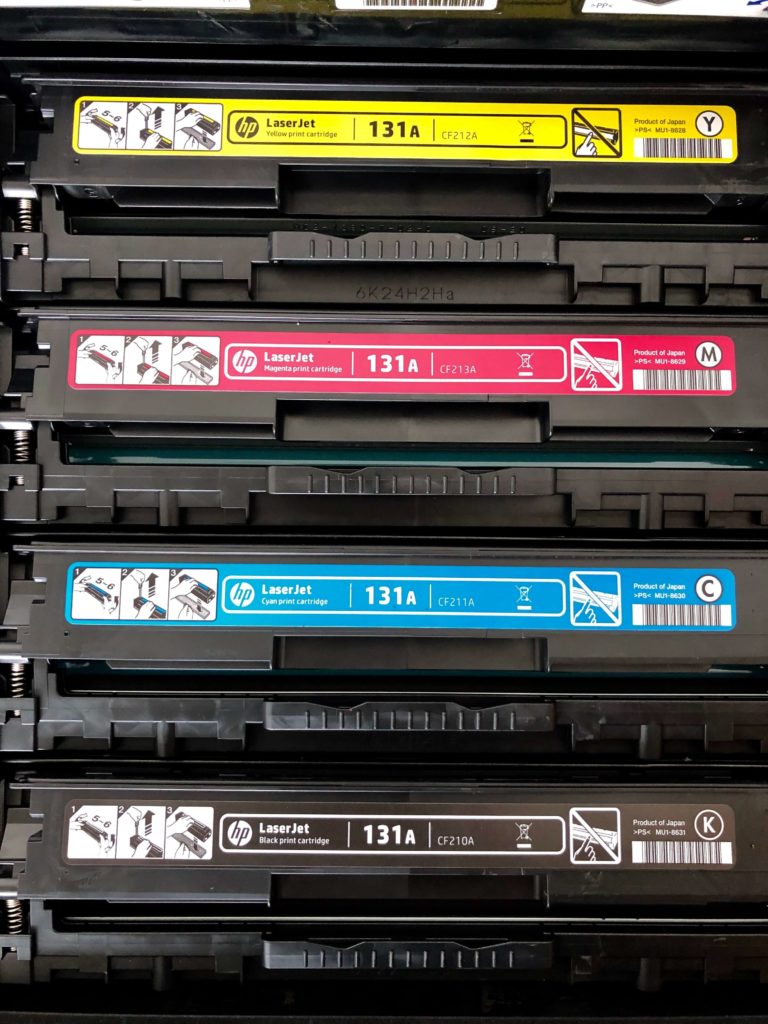Printing Jargon Explained
If you’ve ever tried to purchase any kind of printer, ink or paper then you will know how much technical jargon you get bombarded by. Most people have no idea what GSM means or why they should actually care. With that in mind, we’ve created a glossary to explain some of the more common technical terms thrown around in the world of printing. The guide is aimed at the average person with no printing technology knowledge so we’ve tried to relate each term to what it could mean to you. Hopefully it will make life a little bit easier when navigating your way through the arduous task of buying a pack of plain white paper…
Paper Jargon

Board Paper – Also known as paperboard, tends to have a really high GSM (see GSM) so is used for things like file folders and postcards, not usually something you would use for standard print jobs.
Bond Paper – This is a sturdy paper used for printing, writing and photocopying that can often be found in offices.
Carbonless Paper – This paper has a chemical coating that allows whatever is written, drawn or printed onto it to transfer to the sheet below. This is the stuff you commonly see used for invoices or receipts.
Coated Paper – This paper is coated in a compound that gives it a glossy finish. You’ve probably seen it in magazines and catalogues.
Density – In terms of paper this refers to the tightness or looseness of fibres and tends to be measured in GSM or in terms of mass.
Finish – This means the characteristics or quality of the surface of a paper. For example matt, silk or gloss.
Grade – This one’s a bit tricky as there is not a standard across the industry. It generally refers to the paper types such as Bond or Bristol and is based on things like the type of pulp and the finish.
GSM – Grams per square meter is a unit of measurement for paper weight, the higher the GSM, the heavier the paper. The standard stuff you find in an office printer is usually 90 to 100gsm.
Ledger Paper – Also known as record paper, is most commonly used to store business records. It’s characterised by its strong, smooth finish.
Printer Jargon
Cassette – Sometimes referred to as ‘the bit you put the paper into’ (maybe), the cassette is a paper source on many printers. It is generally found towards the bottom of a printer as a pull out plastic tray that can be filled with paper.
CMYK – This is the abbreviation for the printing colour model of cyan, magenta, yellow and key (black). You will come across this when purchasing and using ink cartridges.
DPI – This stands for dots per square inch, which is a measure of print resolution. Printers deposit tiny dots of colour onto a page and the DPI is how many of these it can put into an area. Generally for printing images the higher the DPI the better, however this isn’t really something that needs to be considered for printing text.
Inkjet Printer – This type of printer works by spraying dots of ink onto a page through a tiny computer controlled nozzle. They tend to be lower in cost than other printer types such as laser and are the top choice for a home printer.
Ink Cartridge – Contains the ink to be placed onto the page. When they run out of ink, they need to be replaced or can in some cases be refilled. Generally printers will use a single black cartridge and either separate colour cartridges or one combined colour cartridge.
Laser Printer – These printers use an electrostatic process to make high quality images. A laser beam is used to create an image on a drum, by altering the electrical charge, these charged parts of the drum then pick up toner. This is then transferred to the paper and heated to fix the image. These printers are generally much higher in price.
Toner – This powdery substance comes in cartridges and is used to create images with a laser printer or photocopy machine.

